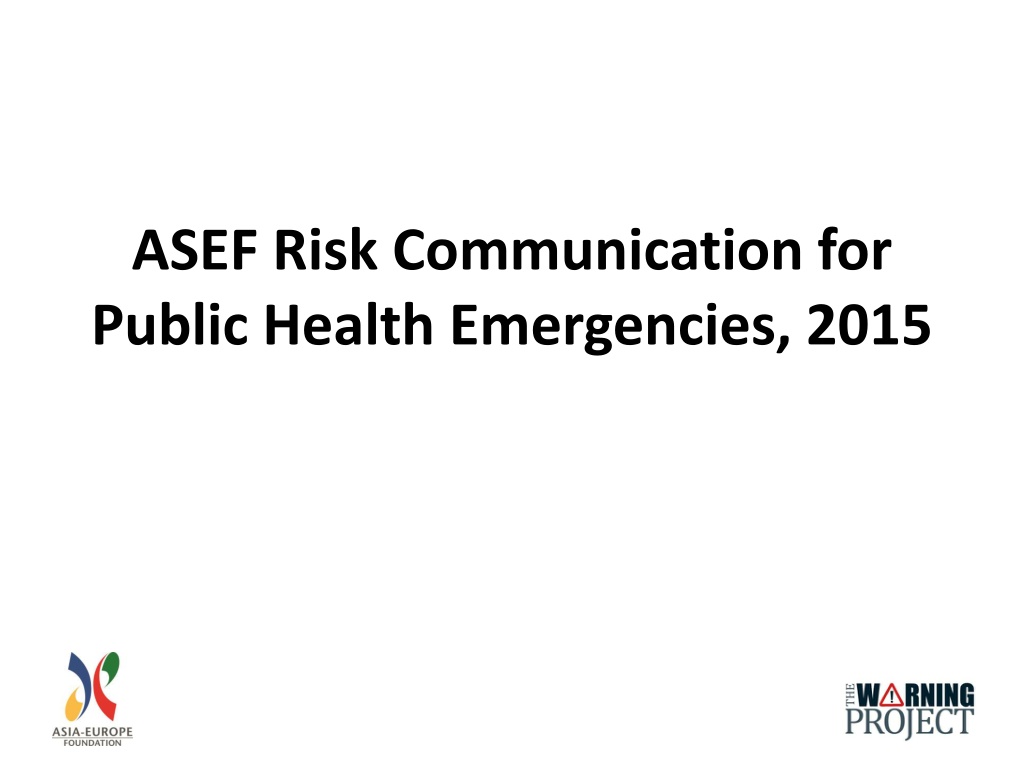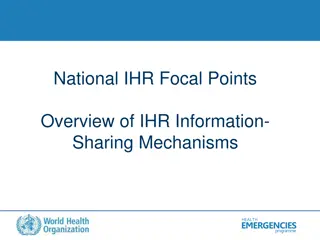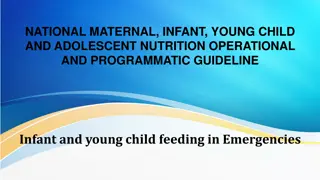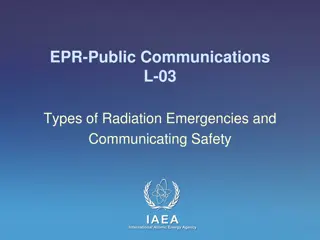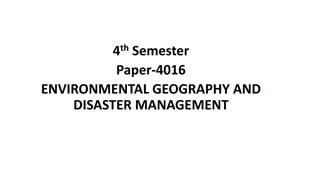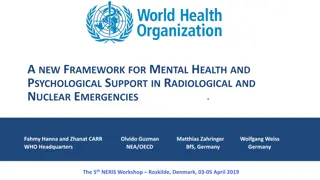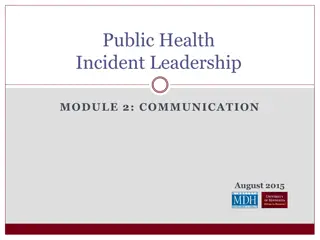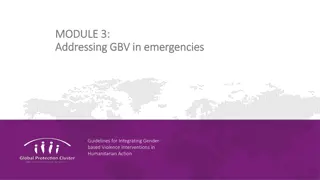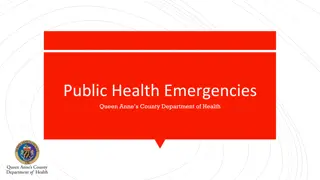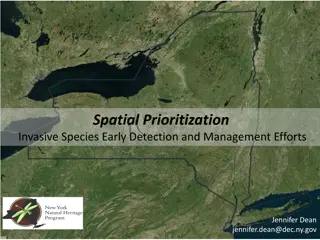Risk Communication for Public Health Emergencies: Prioritizing Strategies
This resource discusses the importance of risk communication in public health emergencies, highlighting key objectives, top priority activities, preparedness levels, and barriers to success. It addresses the need for effective media relations, community engagement, and social mobilization in emergency risk communication strategies. The content emphasizes understanding and addressing challenges faced by healthcare workers in national risk communication efforts.
Download Presentation

Please find below an Image/Link to download the presentation.
The content on the website is provided AS IS for your information and personal use only. It may not be sold, licensed, or shared on other websites without obtaining consent from the author. Download presentation by click this link. If you encounter any issues during the download, it is possible that the publisher has removed the file from their server.
E N D
Presentation Transcript
ASEF Risk Communication for Public Health Emergencies, 2015
Objectives 1. Share experience and expertise 2. Understand the importance and challenge of reflecting the voices of healthcare workers in national risk communication 3. Isolate key barriers to implementing national risk communication strategies 4. Develop recommendations for strengthening national risk communication strategies
What should be the top priority activities in your current emergency risk communication strategies? 39% A. media relations B. IEC materials C. social media D. community engagement E. social mobilization 36% 12% 9% 4% A. B. C. D. E.
Pre-Workshop Survey: Top priority activities in your current risk communication strategies 1. media relations 2. IEC materials 3. social media 4. community engagement 5. social mobilization
On a scale of 1-5, how would you currently classify your country or organization's level of emergency risk communication preparedness? 1. We are not prepared 2. -- 3. -- 4. -- 5. We are very prepared 54% 30% 8% 8% 0% 1. 2. 3. 4. 5.
On a scale of 1-5, how would you currently classify your country or organization's level of risk communication preparedness? We are not prepared: 1 2 3 4 5 0 3 10 15 2 0% 10% 33.3% 50% 6.7% We are very prepared:
Ranking Methodology 5. In terms of Dialogue with those affected and involved, rank the most significant barriers to success (Priority Ranking) A. Lack of guidelines and formal listening procedures Inadequate budget and human resources support Weak levels of leadership engagement and endorsement Lack of emergency engagement exercises and training Practical tools and templates to support dialogue Other A: 319 B. B: 255 C. C: 353 D. D: 281 E. E: 275 F. F: 200
Module 1: key discussion 70% -- communicate a serious, emerging risk immediately, prior to lab or other confirmation 57% -- organizations resist transparency due to incomplete information Transparency is a crucial issue in supporting all emergency risk communication objectives
Key transparency barriers: 1) Ensuring leadership engagement/endorsement 2) Lack of guidelines/policies 76% A. Endorse B. Reject C. Debate 18% 5% A. B. C.
Key Transparency abilities: 1) Rapid approval of warnings and advisories 2) Adherence to decision making principles in a regulation, policy or guideline 57% A. Endorse B. Reject C. Debate 43% 0% A. B. C.
Module 2: key discussion If no agreement can be reached on whether or not to warn of potential EATEX risk, what do you do? 71% -- warn of the potential risk even if a coordinated/compromise cannot be reached
Coordination barriers: 1) Ensuring leadership engagement and endorsement 2) Lack of guidelines/policies 67% A. Endorse B. Reject C. Debate 28% 5% A. B. C.
Coordination abilities: 1) Identification/engagement of focal points 2) Communication coordination structure 3) Sharing risk communication messages and strategies during a serious public health event 100% A. Endorse B. Reject C. Debate 0% 0% A. B. C.
Module 3: key discussion We should not put the blame on the affected We need to change behavior of leaders as well Knowledge/data gathered must feed into response operation or it becomes useless On social media: may be the minority, but because of the platform may appear to represent the majority
Listening/Dialogue barriers: 1) Weak levels of leadership engagement and endorsement 2) Lack of guidelines and formal listening procedures 81% A. Endorse B. Reject C. Debate 14% 6% A. B. C.
Listening/Dialogue abilities: 1) Gathering/processing the views and perceptions of individuals, partners and communities affected 2) Adapting communication strategies based on findings 3) Reflecting community perspectives back into emergency management decision making 95% A. Endorse B. Reject C. Debate 5% 0% A. B. C.
Module 4: key discussion Strong push to move on undermines real evaluation Must be part of the planning cycle KPIs: must align to risk comm objective Organizations must prioritize/invest in function
Evaluation barriers: 1. Low levels of leadership engagement/ endorsement 2. Inadequate budget and human resources support 3. Lack of monitoring and evaluation training/capacity 92% A. Endorse B. Reject C. Debate 8% 0% A. B. C.
Emergency Risk Communication Evaluation Abilities: 1) Establishing clear risk communication objectives 2) Monitoring system (eg. media/social media) 3) Integration into preparedness strategies 97% A. Endorse B. Reject C. Debate 3% 0% A. B. C.
